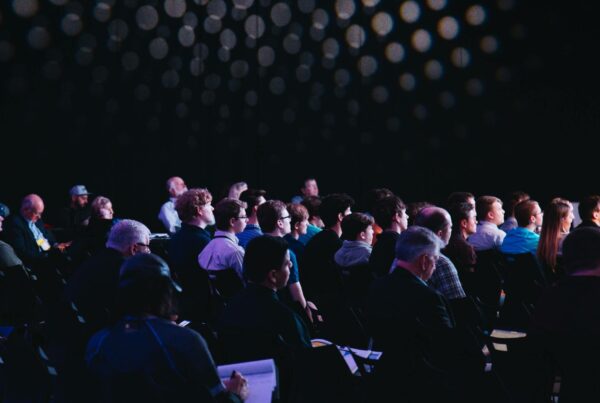Estimated reading time: 15 minutes
The Annual Agile conference hosted by the Agile Alliance is where the Agilists from all over the world congregate. They connect, learn, and debate Agile principles, brainstorm new ideas and hear about innovations in the field. This year’s conference in DC attracted attendees from over 90 countries.
Every year we attend the Annual Agile conference to do our part to build and contribute to the community. We then try our best to coalesce what we learned into a “Top Takeaways” list that we share at a free event in Dallas, Austin, and Houston.
Here is a brief summary of the 12 key Agile2019 takeaways.
Setting up for success – Agile workspaces and team agreements
(The takeaway was taken from two talks:- “How To Design and Build Agile Team Rooms that Rock!” by Kathy Aragon and Alfred Lorber.
- And, “Stop Spinning your Team’s Wheels, It’s time to revisit your working agreements!” by Alex Kanaan
- Summarized by Florence Lowe)
Research shows that our workspaces have a significant impact on how productive we are and what we accomplish. Enter Agile Workspaces. These are not open offices but spaces where people can collaborate, focus, learn, socialize, and get some alone time.
For Agile teams this translates to a dedicated space for standups, meeting rooms that are available at short notice, and shared and dedicated rooms for specific teams.
Kathy Aragon and Alfred Lorber at Sandia Labs share that the best way to create such space is by involving the team itself. They found an inspiration that everyone in the team can relate to. The next step was to create mockups and renderings. Once this was finalized, in true Agile fashion, the team debated about the elements that make this space more human such as furniture, color, furnishings, etc.
The resulting creation fosters collaboration via open and closed conferences and huddle rooms. The entire space is reconfigurable. This helps teams with changing members to collaborate easily without each giving up their personalized space. All resources are in mobile cabinets and the kitchen is for socialization and acts as respite room.
Focusing on individuals and interactions for solid team agreements
While this is a great concept in helping teams work more efficiently, in reality, software development people are distributed across the globe in varying time zones. Alex Kanaan’s talk on team agreements is an eye-opener on issues that are not visible outright but lie just under the surface.
Kanaan talks about an experience where the teams are distributed across Mumbai, India and Dallas, TX, USA. At the outset, he notices that there are no impediments, but there exist challenges such as opposing time zones, cultural barriers and lack of shared ownership.
Simply giving feedback did not work. He realized that he needed to build trust and give everyone a voice. Using Scrum values, he created a platform where everyone could share their thoughts without fear. The lessons that surfaced were to build respect and trust and be human first.
More than the team agreement itself, how you get there is more important – by focusing on the individuals and interactions.
-
Empathy and Leadership are the keystone species of our ecosystem
- (“Empathy: A Keystone Leadership Habit” by Paul Tevis. Summarized by Mike Watson)
Continuing our Agile2019 takeaways tour, this session by Paul Tevis was enlightening as it talked about the importance of empathy and leadership in a keystone leader.
A keystone species is one that significantly defines the ecosystem. For example, in southeast Alaska, the sea urchins completely eroded underwater flora. In the 1960s, otters, whose primary food source is sea urchins, were introduced to this environment. Over a period of time, this led to the regrowth of lush underwater forests, a controlled number of sea urchins and an increase of over 25 percent in bald eagles in the area.
Borrowing from the humble otter, Tevis’ talk focuses on how being an empathetic leader can positively affect the human ecosystem. He talks about how leaders can think and observe how people feel, and leverage that in powerful ways. The advantages of being an empathetic leader have a positive impact on productivity and dealing better with adversity.
Leading with a heart and a backbone means you have the conviction and the know-how to help teams reach a common goal in the most efficient way. Tevis ends the session with seven habits that leaders can imbibe to make better leaders.
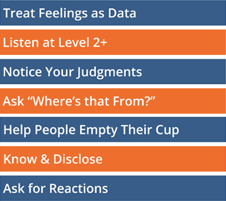
-
UX is an ongoing process and not a one-off sprint
(“UX Within a Sprint? Designers Part of a Cross-Functional Team? Yes, Design Can be “Done”!” by Gary Pedretti. Summarized by Vinayak Joglekar)
The session by Gary Pedretti immediately struck a note. He argues that UX and design should not be separate sprints and a one-off activity. This fits in with a waterfall model and is not relevant in the Agile world. Design is something that keeps evolving as the product is built and tested.
While this is a great idea to have on paper, in reality, UX designers and developers are not always on the same page.
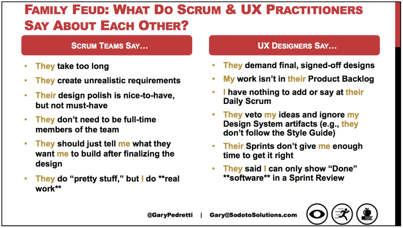
Team members are inherently different people: designers are creative and treat UX as a fluid and continuous process, while developers time-box their deliverables. Pedretti compares this situation to the equation between developers and testers; however, they now work like a well-oiled machine since enough time was given to both to find common ground.
In a similar way, designers and UX professionals must be a part of the sprint, even if they are not actively contributing at the beginning. Time is the only solution for these teams to find objectives to which they can collectively contribute.
Role of the Business Owner
Coming to the next topic of business agility, much has been said and written about it. The Agile methodology revolves around handing change.
When product requirements change, this is often a result of the underlying business strategy pivoting. While we have been talking about how Agile empowers teams to respond to change, a more evolved thinking would be about business agility. Business agility is where the business as a whole is responding to changing market environments and customer needs.
Similar to the product owner, this thinking now gives rise to a new role of the business owner.
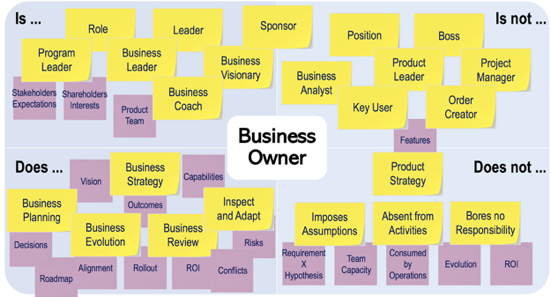
A business owner is not to be confused with someone who owns a company and owns its equity. Rather it is someone who has goals to make the business successful and is a market visionary. A business owner does more business and market strategy than devising the product and its nitty-gritty. He or she is someone who has multiple product owners reporting to them with separate products that make the business as a whole successful.
We have sprint-off!
(“3… 2… 1… We have Sprint-Off” by Talia Lancaster, Angie Doyle. Summarized by Florence Lowe)
Next, on the Agile2019 takeaways tour is the session by Angie Doyle and Talia Lancaster talks about getting teams to work together by intentionally creating a culture that respects and embraces diversity. The duo has a tool called the Team Canvas that has nine sections. They suggest holding working sessions to go through each of these nine sections. These sessions help uncover focussed vision and mission statements based on who the teams are and how they help the world around them.
They also have a Board Game that helps identify common goals. This helps members list their personal goals and how being part of this teams moves them towards achieving those. While we are aware of these frameworks and how they apply to specific members, Doyle and Lancaster show how these are easily translatable to teams. The goal here is to work with the team as a whole, have fun while doing it and get real alignment with tangible goals.
People and collaboration are Agile’s two cornerstones pillars. Without this, you cannot have a product.
Using metrics for good
(“Using Metrics for Good not Evil: or How I learned to Stop Worrying and Love the KPIs” by John Tanner. Summarized by Mike Watson)John Tanner talks about how metrics can be used for good. He delves into what metrics are by its textbook definition, but it all boils down to if what we are building is really any good. Tanner further delves into the evils of metrics and how they become perverse incentives that punish the team, rather than promote growth. This eventually leads to how people find ways to game the metrics and work their way around them.
Tanner also focused on why velocity is not a good metric. While its a great metric for planning it does not help create understanding; it is easy to game and generally not a good predictor of outcomes.
He then spoke about healthier metrics – ones that tie to the company mission and tell if what we are doing adds to that mission. These metrics talk about how the team is influencing the world and helping make people’s lives a little easier. He talks about how these metrics measure the work being done rather than the people themselves.
His key parting thought was on building trust and transparency in the team and helping them understand why a metric is being set and how it helps the team monitor and achieve.
Building DevOps pipelines and telemetry
(“Making Work Visible: Role of Information Radiators in Agile and Telemetry in DevOps” by Anil Jaising, Suresh Chinnam. Summarized by Vinayak Joglekar)
Combining two sessions by Rich Mills on DevOps Patterns and Anil Jaising and Suresh Chinnam on Making Work Visible brings us to Building DevOps Pipelines and Telemetry.
The session by Rich Mills is about building CI/CD pipelines. So far building a CI/CD pipeline with monoliths has been purely theoretical. With the advent of Microservices, it has now become possible to do CI/CD in a practical manner.
Mills discusses how to build a pipeline for CI/CD using Microservices. He lists the patterns for a successful Microservices pipeline. This suggests that the pipeline code follows the same strategy as the application code, each service has its own pipeline, and the need for more full-stack developers building the UI and the API.
Mills lists the test stages in the pipeline where the microservice UI and API deploy in the Dev staging environment. Then it goes through a User Acceptance Testing phase, and then on to the production environment. The key takeaway here is that the pipeline code is part of the main application codebase.
Next, Jaising and Chinnam talk about telemetry that brings in observability in distributed applications and why it is not easy. The presenters further talked about the Telemetry-Garden Grove experiment where giving users the decision to control themselves than being controlled by an enforcing authority is a much better alternative. Bearing this in mind, here is how a typical telemetry system works:
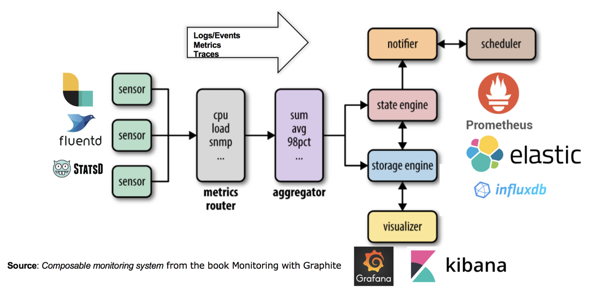
The presenters next talked about a new tool called ‘nifi’ by Apache that combines all the various stages mentioned above namely, data acquisition, storage and processing.
Revenue generating UX
(“Revenue Generating UX: Building a $5M Business with Robots” by Tami Reiss. Summarized by Florence Lowe)
Tami Reiss presents how UX can be revenue-generating and can be a business by itself. As she was stepping into her new role, Reiss was tasked with increasing the ARR of her company from USD 750K to USD 5M.
Her first set of tasks as she came into the organization was to build trust with the team. After this, she took efforts to understand the problem, find the right data to measure and move from goals to outcomes. For example, reducing quote time to within a single day from the time of signing up had to be quantified into steps and completion metrics.
One of the next things she did was map out their existing funnel, plug any leaks and then turn on the tap. Reiss’ talk on minding the fundamentals included displaying only the most relevant information above the fold, use social proof and pictures that are relevant to the customer – essentially everything that a user needs to make up their mind.
Reiss also talks about essentials such as keeping the copy so simple that it can be read by a 9th grader, providing social proof, using aesthetic pictures and eliminating unnecessary form fields.
The main takeaways start with measuring what is important and that the fundamental rules of UX matter substantially. This fits in nicely with the Agile aim of prioritizing customer satisfaction through early and continuous delivery of valuable software.
Diversity without disclosure
(“Diversity without Disclosure: Norms to Broaden Inclusion and Intersectionality” by Cheryl Hammond. Summarized by Mike Watson)Cheryl Hammond talks about the strategies we can employ to do better in the area of diversity and inclusion. Cheryl started off the session by using the example of her own bad knees that prevent her from taking steps or climbing anything. She further spoke about how it was awkward for her to look for alternate routes and explain them to anyone she was with. She then shows a picture of the conference space at Agile2018 where there is a ramp along with stairs. Cheryl could now gently steer the person she was walking with to the ramp without having awkward conversations about her condition.
She speaks about how visible and non-visible attributes form diversity. Since this was an Agile conference she discussed inclusion in DevOps. What she meant by this was that since it is all around us already, we should not generalize. For example, working with one deaf person may not be the same as working with all deaf people.
Hammond then talks about a few proactive techniques that you can add to your team. The first one was about moving a conversation with “Yes, and…” instead of finding something negative with the topic.
A powerful takeaway from this session was to have user manuals for oneself. This guide is essentially a FAQ about you and is available for anyone to read.
The parting thought of this session was that power dynamics matter. You have to be conscious of your influence while working with anyone in the organization vis-a-vis other peers.
EventStorming + Hexagons
(“Challenge Everything! Using EventStorming to challenge your business and architecture too!” by Alberto Brandolini and “One Architecture to Rule Them All: Why Hexagons are Awesome” by Ted Young. Summarized by Vinayak Joglekar)
We talked about microservices a little further up, however, splitting requirements into separate microservices that do one thing really well is challenging. In this session by Alberto Brandolini, we learned to separate our bounded design context using EventStorming.
EventStorming is where you get everyone in a room and use orange stickies to list major events on a timeline from left to right. This leads to interesting conversations amongst people in the room about the sequence of events. Every disagreement is a scarlet sticky which form the main conversation pieces. The more you talk and discuss these, a clear business narrative emerges. In the end, a voting system decides the major bottlenecks and their priority.
These events then tease out a bounded context. Each of these contexts talks through events and has its own unit of purpose, language, unit of responsibility, and unit of pride. Once these contexts are clear, we see how microservices can address each one of them.
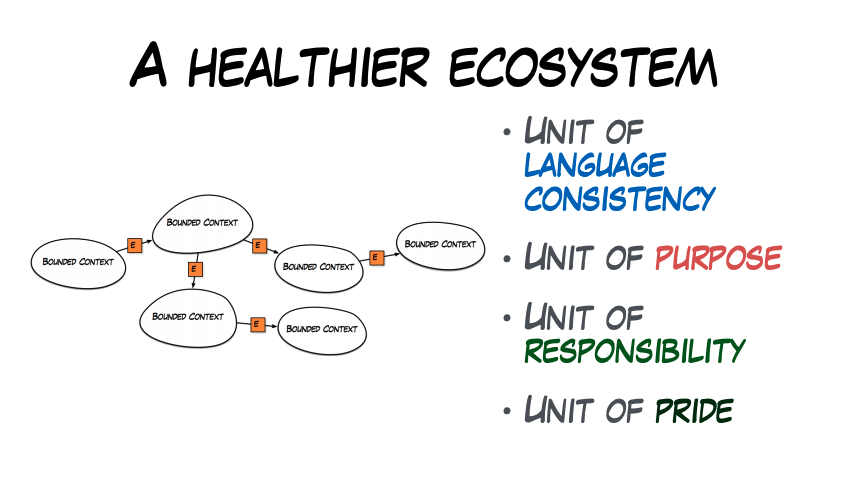
The second session by Ted young about visualizing architecture as hexagons instead of the traditional layered approach is also interesting. We often see business logic entangling with the front end or the back end. In a traditional architectural diagram, there is no one place for this business logic.
In a hexagon framework, the core domain lies in the center of the hexagon and everything else is abstracted and externalized via plugins. This brings in a lot of clarity and does not let business logic mix with other elements such as infrastructure.
Agile under pressure
(“Agile under pressure: shipping a disruptive medical device in less than two years” by Robert Stohr and Jana De Cock. Summarized by Florence Lowe)This talk by Jana De Cock, Robert Stohr was about how Barco hired In the Pocket to develop medical instrumentation for dermatologists. Medical products typically have a long product cycle and Barco set themselves a two-year timeframe to launch the MVP. With four toolkits underway, the team worked on three core tenets: Product exploration, prototyping, and user validation and lastly, build ship and iterate.
The team achieved alignment and improved communication through weekly sprints with the clients and a daily end-of-day sprint amongst the team itself. Barco’s development partner iteratively built prototypes that had outputs that were relevant from a doctor’s perspective, not just the product user.
To aid effective planning, information overload and an efficient work ethic, the team focused on maximizing transparency, an outcome-driven backlog, and a clear definition of what done meant.
The key takeaways from this session were how the team diligently incorporate user feedback, find a good balance between ‘good enough for now’ and ‘safe to try’, ruthlessly prioritize tasks that directly added value and align towards a common goal.
Forecasting using Monte Carlo
(“Sizing the future: How to predict the size of your products collaboratively with data” by Adam Yuret. Summarized by Mike Watson)Getting right the number of sprints required to finish a project can be forecasted; however, the models are not accurate, which makes project planning challenging. In this session Adam Yuret talks about using the Monte Carlo method of forecasting, historical data and seven throughput samples are good enough, while anything larger than eleven samples will not add significant value to the model. The model then takes in the samples and data and outputs probabilistic values.
While this is a data-driven method to arrive at the number of sprints, few pitfalls exist. Cognitive bias where you try to tweak the model to arrive at a number you want or getting a number your boss thinks is relevant and not the one suggested by the model.
Managing attention in a world full of distractions
(“How to Manage Your Attention in a World of Distraction” by Chris Bailey. Summarized by Vinayak Joglekar)The keynote by Chris Bailey gave insights on how to focus better. The human mind craves for distraction every 40 seconds. However, through experimentation, he observes that brilliant ideas and epiphanies usually occur when the mind is wandering or we are occupied with mundane tasks.
Bailey states that when your energy is high, execution happens; and, when your energy is low, ideas come forth. The key takeaway here is that distraction is not the enemy of focus but its overstimulation.
Conclusion
The Agile2019 takeaways were also presented as a live session in Dallas, Austin, and Houston along with a live webinar.
If you liked reading this post, here are a few more that may interest you.


